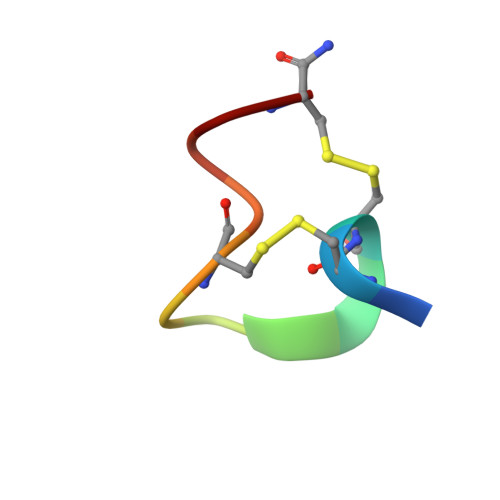Structures of Aplysia Achbp Complexes with Nicotinic Agonists and Antagonists Reveal Distinctive Binding Interfaces and Conformations.
Hansen, S.B., Sulzenbacher, G., Huxford, T., Marchot, P., Taylor, P., Bourne, Y.(2005) EMBO J 24: 3635
- PubMed: 16193063
- DOI: https://doi.org/10.1038/sj.emboj.7600828
- Primary Citation of Related Structures:
2BYN, 2BYP, 2BYQ, 2BYR, 2BYS - PubMed Abstract:
Upon ligand binding at the subunit interfaces, the extracellular domain of the nicotinic acetylcholine receptor undergoes conformational changes, and agonist binding allosterically triggers opening of the ion channel. The soluble acetylcholine-binding protein (AChBP) from snail has been shown to be a structural and functional surrogate of the ligand-binding domain (LBD) of the receptor. Yet, individual AChBP species display disparate affinities for nicotinic ligands. The crystal structure of AChBP from Aplysia californica in the apo form reveals a more open loop C and distinctive positions for other surface loops, compared with previous structures. Analysis of Aplysia AChBP complexes with nicotinic ligands shows that loop C, which does not significantly change conformation upon binding of the antagonist, methyllycaconitine, further opens to accommodate the peptidic antagonist, alpha-conotoxin ImI, but wraps around the agonists lobeline and epibatidine. The structures also reveal extended and nonoverlapping interaction surfaces for the two antagonists, outside the binding loci for agonists. This comprehensive set of structures reflects a dynamic template for delineating further conformational changes of the LBD of the nicotinic receptor.
Organizational Affiliation:
Department of Pharmacology, University of California at San Diego, La Jolla, CA 92093-0636, USA.

















